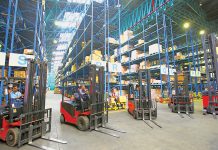With over 47 million internet users in India & e-commerce, more and more brands are seizing the opportunity to reach users through D2C channels, says Mayur Karwa, Co-Founder & Director at Eshopbox. Now sellers can sell directly to consumers through their websites without relying on intermediaries.
The onset of COVID-19 has led to a surge in e-commerce and accelerated digital transformation, creating a shift in consumer behaviour towards shopping online for both essential & non-essential categories. This changed scenario made it critical for small and medium businesses across industries to deliver a seamless customer experience leading to the emergence of direct-to-consumer (D2C) channels. Moreover, increased internet penetration, smartphone usage, and digitisation of services have prompted consumers to turn to digital shopping solutions.
The pandemic had adverse consequences on SMEs with restricted movement and social distancing norms. However, the emergence of D2C e-commerce in India has allowed brands and consumers to switch from the traditional model of shopping. With over 47 million internet users in India & e-commerce, more and more brands are seizing the opportunity to reach users through D2C channels. Now, sellers can sell directly to consumers through their websites without relying on intermediaries and direct purchase from brands has enabled customers to buy the products at discounted rates and receive better knowledge about the brand.
Reports suggest that today, more than 50 per cent of the consumers opt to visit D2C brand websites rather than retailer websites because they offer more comprehensive information. However, due to the lack of automation, many D2C brands face difficulty in keeping up with the pace and underestimate customer demand, which leads to a loss in revenue and can potentially damage the brand’s reputation. For instance, poor inventory control and inefficient order processing reduce the trust a customer has in your product and tarnishes the customer experience. Similarly, failure to manage last-mile deliveries causes frustration for the customer. Hence, to keep the operations up and running, investing in automation tools and outsourcing fulfilment to a third-party logistics company is the best option for any D2C brand. Having the retail fulfilment infrastructure and technology in place can help brands better manage logistics. For instance, automatically processing orders that are placed on your online store can help verify order information, save cost and time, making it more efficient in the longer run.
Eshopbox Advantage:
- From warehousing to return management — everything is handled under one roof: Eshopbox offers state-of-the-art infrastructure across all its fulfillment centres (FCs) that enable smooth product inward, secure storage facilities and efficient operations.
- Ease of multiple locations: Eshopbox has FCs across India at locations in Gurgaon, Mumbai, Bangalore and Kolkata allowing pan India coverage for D2C brands to save time and logistics cost.
- Inventory efficiency for better sales: Eshopbox by deploying the same inventory across all sales channels including marketplaces allows D2C brands to manage their business at a high efficiency leading to better business.
- Integrated shipping solution: Eshopbox offers a shipping aggregation service as part of its fulfilment
solution that allows D2C brands to have a one-stop solution for all its operations. - Post order experience: Eshopbox provides a post-order experience layer for D2C brands customers where
they can engage with the portal and track, return, and exchange products.













